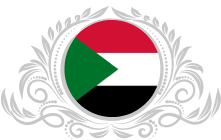
SUDANESE RED SEA
The Sudanese Red Sea coast, which stretches for 750 km, is undoubtedly unique and unrivaled worldwide due to its beaches and water’s purity and unexplored beauty.
The region is known internationally as an ideal place for snorkeling, diving, seafaring, and large fish hunting. The marine life is rich and diverse, with crystal-clear waters, coral reefs, and exotic, colorful underwater life.
The Red Sea is considered a colossal lake that intercedes between the Mediterranean Sea from the north and the Indian Ocean to the south, with fiords and small islands.
Diving trips usually begin from Port Sudan aboard yachts of different sizes and fully equipped with diving equipment, with the availability of many diving locations.
Senganib Coral Colony is also renowned for its sea fiords and many types of fish, chief among them the hammerhead shark. Divers often sail north to Romi Corals, where the well-known marine scientist Jacques Cousteau accomplished his notable studies and research. Mr. Costaeu’s underwater laboratory still exists.
Further north, we find the most significant sea island on the Sudanese coast. The Island of Mogarsem is embedded with golden sand beaches and dense mangrove forests, interspersed with volcanic sun-beaters and rocky hillocks. The nights here are spent leisurely in the evening amid quiet, isolated camps and traditional folklore demonstrations.
A sea cruise may last for two or three weeks. However, those who desire shorter or longer trips can also be accommodated.
Coral reefs
One of the most magnificent features of the Red Sea is its beautiful coral reefs. Corals, or their skeletons, are the main components on which reefs are built. Coral is an animal, individually called a polyp, generally one to a few millimeters in diameter. It looks like a bag with six arms (or multiples of six), and for its protection and support, it forms a skeleton of a kind of limestone. These individual skeletons, or corallites, as they are called, are cub or tube-shaped. Usually, they live in coral colonies, which may be centimeters to several meters in size. Different kinds of corals occur in other areas of the reef; factors such as waves and light determine the nature of the coral, whether of delicate or solid structure. Thus, the distribution of corals reflects their respective adaptations to the prevailing environmental conditions in various parts of the reef. Aside from corals, other elements are also instrumental in the structure of reefs; for example, worms and calcareous red algae, a form of marine plant.
Marine life
Surrounding the reefs and complementing them in creating a breathtaking sight is the broad spectrum of marine life. The Red Sea is famed for its plants and animals, many of which are related to those of the Indian Ocean, but some of which are exclusively found in the Red Sea.
Among the common fish in the Red Sea are tarpon, giant herring, salmon herring, milkfish, soldier fish, goggle eye, and rock cod. There are also more than 320 species of sharks, among them such voracious predators as the tiger shark and hammer shark. It should be noted, however, that unless irritated or attracted by blood, sharks are peaceful animals, and, generally speaking, shark attacks along the Red Sea coast are sporadic. In addition, several species of whales also find homes in the Red Sea, namely the blue whale, a 15-meter-long giant that feeds on plankton, and the killer whale, which poses no threat to humans but scares off sharks. The 8 to 10-meter-long whale shark is a jolly, plankton-eating giant that befriends fishermen.
Recreational Activities:
All these characteristics and many others make the Red Sea an attractive location for vacations and relaxation. This is especially true for those who love the sea and enjoy its offerings. Scuba divers, snorkelers, yachting enthusiasts, and various water sports enthusiasts will find the Sudanese Red Sea an ideal place for recreation.


